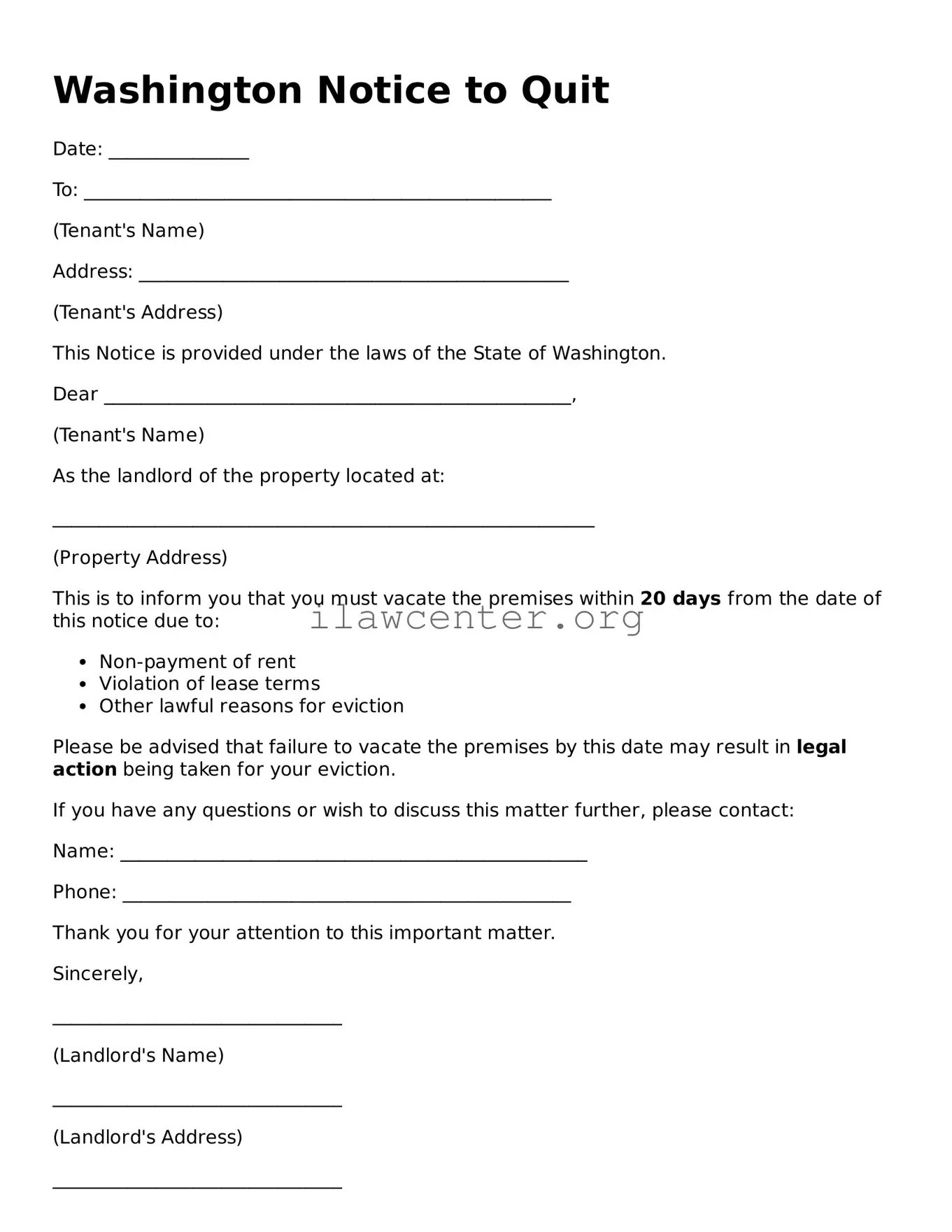What is a Notice to Quit in Washington State?
A Notice to Quit is a formal document that a landlord provides to a tenant, notifying them that they must vacate the rental property. In Washington, this is often the first step in the eviction process. It outlines the reasons for the termination of the rental agreement, such as non-payment of rent or violation of lease terms.
What are the legal grounds for issuing a Notice to Quit?
In Washington, there are several valid reasons for a landlord to issue a Notice to Quit. These include non-payment of rent, lease violations, or when the landlord decides to end a month-to-month tenancy. The specific grounds must be stated clearly in the notice, so the tenant understands why they are being asked to leave.
How much notice must a landlord provide?
The notice period varies depending on the reason for the termination. For non-payment of rent, a landlord typically must give a 14-day notice. For lease violations, a 10-day notice is common. If the landlord is ending a month-to-month tenancy without cause, they usually must provide a 20-day notice. It is essential for the landlord to follow these timeframes to ensure compliance with Washington law.
What should the Notice to Quit include?
A proper Notice to Quit must include specific details such as the tenant's name, the property address, and the reason for eviction. It should also state clearly the timeframe in which the tenant must vacate the property. The notice should be signed and dated by the landlord or their agent.
What happens if a tenant receives a Notice to Quit?
Receiving a Notice to Quit is serious. The tenant must understand their rights and the actions they can take. They can either comply by moving out within the specified timeframe or respond to the notice if they believe it's unjust. Tenants may also seek legal advice to explore their options and determine if they have valid reasons to contest the eviction.
Can a tenant contest a Notice to Quit?
Yes, a tenant can contest a Notice to Quit if they believe that it was not issued properly or if they dispute the claims made by the landlord. This usually involves filing a response in court after receiving an eviction notice. Tenants should gather all relevant documentation and consider seeking assistance from a legal professional to navigate the process effectively.
What are the potential consequences of not complying with a Notice to Quit?
If a tenant does not comply with a Notice to Quit, the landlord may proceed with the eviction process. This could involve filing a lawsuit in court to obtain an eviction order. If the court rules in favor of the landlord, the tenant could be forcibly removed from the property. Additionally, the eviction may have a lasting impact on the tenant's rental history, making it more challenging to secure housing in the future.
